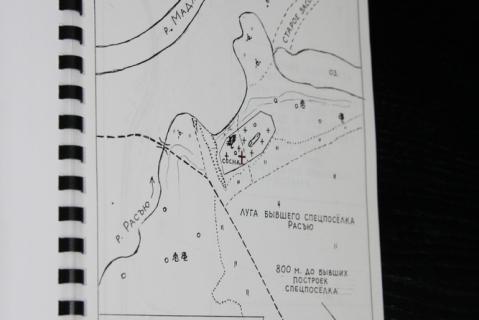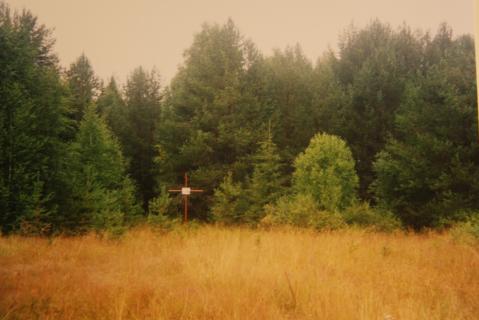The Rasyu special settlement was established in the early 1930s for dekulakised peasant families. By the end of that decade there were about 900 forced settlers there. There is information that the settlement had two cemeteries. The numbers of men, women and children buried there are unknown.
In 1956, Rasyu was closed and the cemeteries were abandoned. One was investigated in summer 2002 by the Kortkeross Centre for Children’s Extracurricular Education. A plan of the burial site was drawn up and a commemorative cross was erected there.
The Memorial online database (2025) lists 129,473 victims in the Komi Republic. (See Nizhny Chov.)
They include many families and individuals deported to the Republic: 20,366 during collectivisation (1929-35), a massive influx in 1940 from occupied Polish territory (19,367) and more in the 1940s and 1950s (6,699). 597 are confirmed as dying in Komi (but cf. Tomsk Region police figures).
The database lists families and individuals (total 901) who from 1930-1 (401) onwards were deported to Rasyu; and 88 who were born there. The total includes 393 deported in 1940, mostly from former Polish territory.
| State of burials | Area | Boundaries |
|---|---|---|
|
Subsidence over burials
|
not established
|
not delineated
|
[ Original texts & hyperlinks ]
Materials of the local history expedition of Kortkeross Centre for Children’s Extracurricular Education (2002) – Pokayanie Foundation (Syktyvkar)
“Rasyu special settlement graveyard”, Virtual Museum of the Gulag [retrieved, 26 May 2022; no longer accessible]


